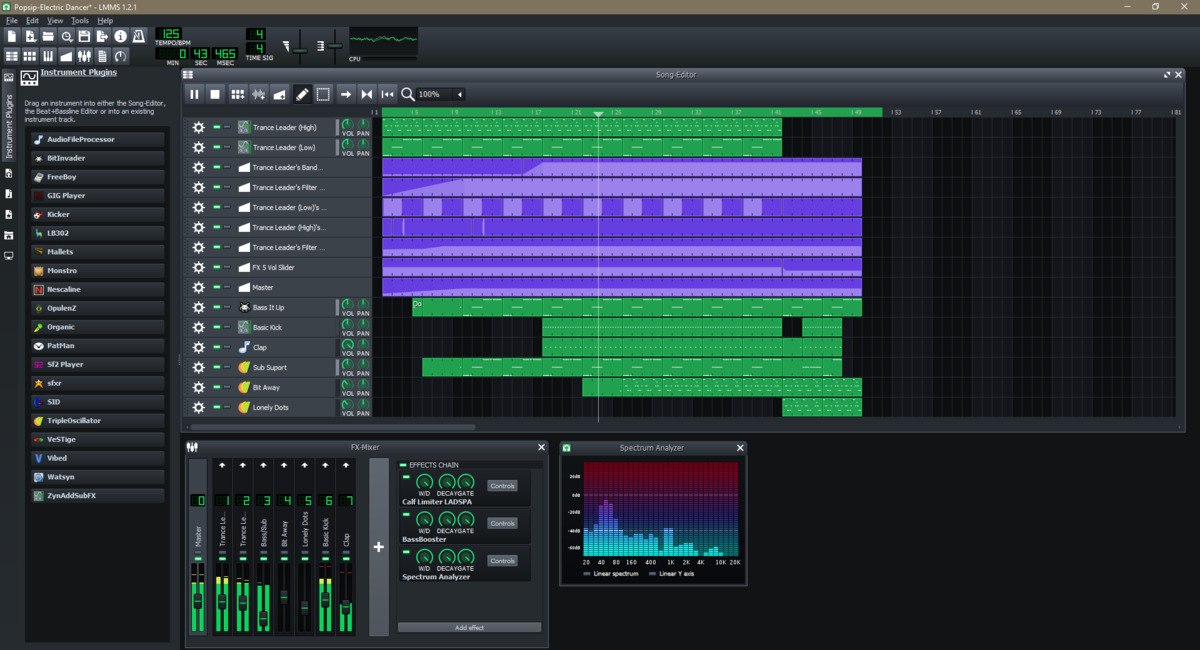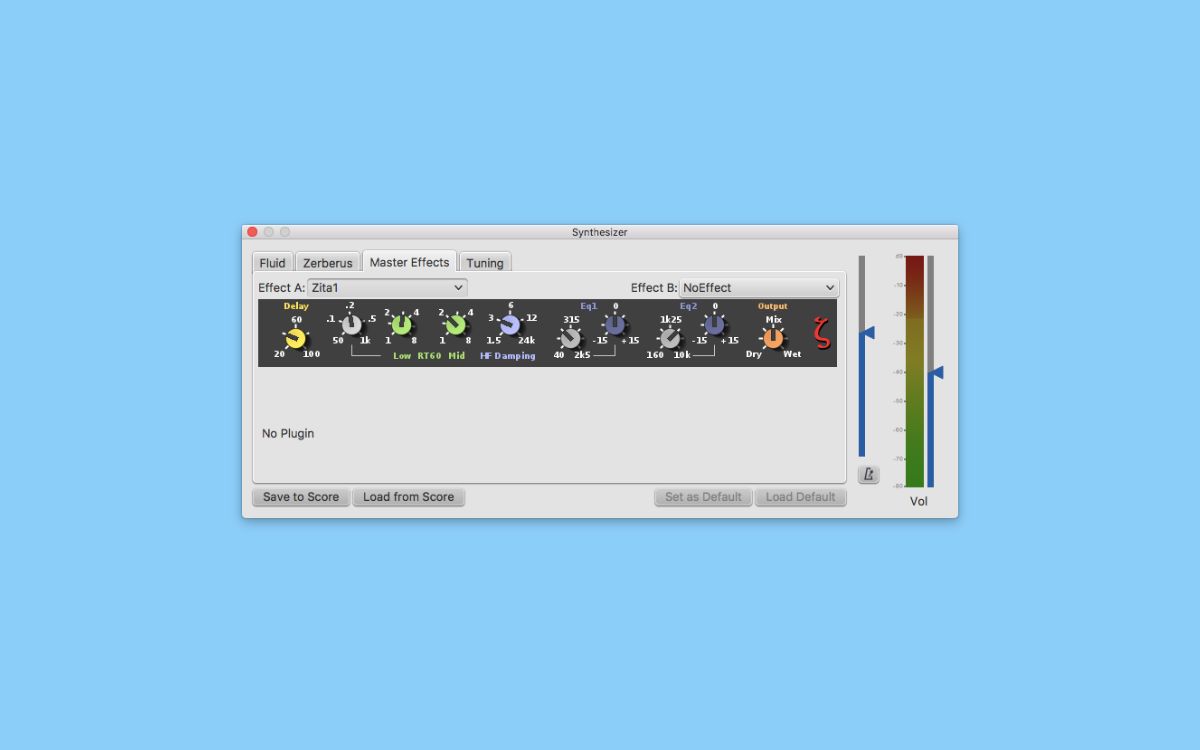Home>Instruments>Guitar>How To Add Distortion To Guitar


Guitar
How To Add Distortion To Guitar
Published: February 12, 2024
Learn how to add distortion to your guitar and create a unique sound. Discover tips and techniques for achieving the perfect guitar distortion.
(Many of the links in this article redirect to a specific reviewed product. Your purchase of these products through affiliate links helps to generate commission for AudioLover.com, at no extra cost. Learn more)
Table of Contents
Introduction
So, you've mastered the basic chords and scales, and now you're ready to take your guitar playing to the next level. One of the most exciting and expressive techniques in the guitarist's arsenal is the use of distortion. Whether you're a fan of rock, metal, blues, or even jazz, adding distortion to your guitar tone can completely transform your sound and take your playing to new heights.
Distortion is a key element of many iconic guitar tones, from the raw, gritty sounds of classic rock to the searing, high-gain tones of modern metal. It's a versatile tool that can add depth, power, and emotion to your playing, allowing you to express yourself in new and exciting ways.
In this article, we'll explore the world of guitar distortion, covering everything from the basics of how distortion works to the different types of distortion and how to incorporate it into your playing. Whether you're a beginner looking to dip your toes into the world of distortion or a seasoned player looking to expand your sonic palette, this guide will provide you with the knowledge and techniques you need to harness the power of distortion and take your guitar playing to the next level.
Understanding Distortion
Distortion is a phenomenon that occurs when the audio signal from a guitar is amplified to the point where it exceeds the amp’s ability to accurately reproduce it. This results in a clipping of the waveform, which introduces harmonic overtones and creates the characteristic gritty, aggressive sound that is synonymous with distorted guitar tones.
There are various factors that contribute to the creation of distortion, including the type of amplifier, the volume level, and the type of pickups used on the guitar. When the signal surpasses the amplifier’s capacity, the waveform becomes “clipped,” leading to the generation of harmonics that give the sound its edgy, aggressive quality.
It’s important to note that not all distortion is created equal. Different amplifiers and pedals produce distinct types of distortion, each with its own unique tonal characteristics. Understanding the nuances of these different types of distortion is crucial for achieving the desired sound in your playing.
Furthermore, the way in which a guitarist plays can also influence the amount and type of distortion produced. Techniques such as palm muting, string bending, and aggressive picking can all affect the intensity and texture of the distortion, allowing for a wide range of tonal expression.
By grasping the fundamental principles behind distortion and how it is generated, guitarists can gain a deeper appreciation for its sonic possibilities and learn to wield it as a powerful tool for artistic expression.
Types of Distortion
Distortion comes in various flavors, each with its own sonic characteristics and applications. Understanding the different types of distortion is essential for tailoring your tone to suit various musical styles and artistic preferences.
1. Overdrive: Overdrive is a mild form of distortion that emulates the natural breakup of a tube amplifier when pushed to its limits. It adds warmth and grit to the tone, making it ideal for blues, classic rock, and jazz styles. Overdrive pedals are prized for their dynamic responsiveness, allowing players to achieve a smooth transition from clean to lightly distorted tones simply by adjusting their playing dynamics.
2. Distortion: Distortion pedals produce a more aggressive and pronounced clipping of the audio signal, resulting in a heavier, more saturated sound. This type of distortion is synonymous with classic rock, hard rock, and heavy metal genres, providing a powerful and assertive tone that cuts through the mix with authority.
3. Fuzz: Fuzz pedals create a thick, buzzy, and heavily saturated distortion that is often associated with psychedelic rock, garage rock, and punk music. Fuzz tones are characterized by their velvety sustain and chaotic, velcro-like textures, making them a favorite among players seeking a raw and untamed sonic palette.
4. High-Gain Distortion: High-gain distortion is the most intense and aggressive form of distortion, delivering searing lead tones and crushing rhythm sounds that are the hallmark of modern metal and hard rock. High-gain distortion pedals and amplifiers offer immense saturation, tight low-end response, and articulate high-frequency definition, making them indispensable for players who demand maximum power and articulation from their tone.
By familiarizing yourself with the distinct characteristics of these different types of distortion, you can effectively choose the right tool for the job and craft a tone that perfectly complements your musical vision and playing style.
Using Distortion Pedals
Distortion pedals are versatile tools that allow guitarists to shape and sculpt their tone with precision and flexibility. Whether you’re seeking a subtle touch of grit or an all-out sonic assault, understanding how to effectively utilize distortion pedals is essential for unlocking their full potential.
When integrating a distortion pedal into your rig, it’s crucial to consider the following aspects:
- Pedal Selection: With a myriad of distortion pedals available on the market, it’s important to choose one that aligns with your sonic preferences and playing style. Whether you opt for a classic overdrive, a versatile distortion, or a specialized fuzz pedal, each type offers distinct tonal characteristics that cater to different musical genres and artistic expressions.
- Gain Staging: Experimenting with the gain staging of your distortion pedal is key to achieving the desired level of saturation and harmonic richness. By adjusting the pedal’s gain control in conjunction with your amplifier’s preamp gain, you can fine-tune the amount of distortion to suit your tonal objectives, from mild breakup to blistering high-gain saturation.
- Tone Shaping: Many distortion pedals feature tone controls that enable you to shape the frequency response of your distorted signal. By adjusting the pedal’s EQ settings, you can tailor the tonal characteristics of the distortion, sculpting the amount of bass, midrange, and treble to achieve a sound that cuts through the mix with clarity and definition.
- Dynamic Control: Some distortion pedals offer dynamic response controls, allowing you to adjust the pedal’s sensitivity to your playing dynamics. This feature empowers you to elicit a wide range of tonal textures and nuances based on your picking intensity and articulation, enabling expressive and responsive playing.
Furthermore, integrating multiple distortion pedals into your signal chain can yield a diverse palette of tonal textures and sonic possibilities. Experimenting with different pedal combinations and stacking various types of distortion can lead to unique and inspiring sounds, providing endless avenues for sonic exploration and creativity.
By understanding the intricacies of distortion pedals and how to harness their sonic potential, you can elevate your guitar playing to new heights, unleashing a world of expressive and captivating tones that resonate with power and emotion.
Using Amp Distortion
Aside from utilizing standalone distortion pedals, another popular method of achieving saturated guitar tones is through the inherent distortion produced by amplifiers. Many guitar amplifiers, particularly those in the realm of rock and metal, are revered for their ability to generate rich, harmonically complex overdrive and distortion when pushed to higher volume levels.
Here are some key considerations for effectively harnessing amp distortion:
- Amp Selection: Different amplifiers exhibit distinct tonal characteristics when pushed into overdrive. For instance, classic tube amplifiers are renowned for their smooth and responsive breakup, delivering a warm and dynamic overdriven tone that is highly sensitive to playing dynamics. On the other hand, high-gain amplifiers are designed to produce aggressive and heavily saturated distortion, ideal for modern rock and metal styles.
- Volume Control: The amount of distortion produced by an amplifier is intricately tied to its volume level. As the volume increases, the amplifier’s power tubes begin to saturate, leading to the onset of natural overdrive and distortion. Experimenting with the amp’s volume settings allows you to dial in the desired level of saturation, from mild breakup to searing high-gain tones.
- Tone Shaping: Amplifiers often feature built-in tone controls that enable you to shape the frequency response of the distorted signal. Adjusting the amp’s EQ settings allows you to tailor the tonal characteristics of the distortion, sculpting the amount of bass, midrange, and treble to achieve a sound that suits your musical style and preferences.
- Master Volume vs. Preamp Gain: Understanding the distinction between the master volume and preamp gain controls is crucial for manipulating the amp’s distortion characteristics. While the preamp gain governs the amount of distortion generated at the preamp stage, the master volume regulates the overall output level of the amplifier. Balancing these controls empowers you to fine-tune the amp’s distortion to suit your tonal objectives.
Furthermore, utilizing the natural distortion of an amplifier in conjunction with external distortion pedals can yield a diverse array of tonal possibilities. By strategically combining amp distortion with pedal-induced saturation, guitarists can craft a nuanced and layered sonic palette that encompasses a wide spectrum of tonal textures and expressive potential.
Ultimately, understanding how to effectively leverage amp distortion opens up a world of sonic exploration, allowing guitarists to tap into the raw power and emotive depth of saturated tones that define the essence of rock and roll.
Tips for Adding Distortion to Guitar
When incorporating distortion into your guitar playing, there are several tips and techniques that can enhance your sonic palette and elevate your overall musical experience. Whether you’re aiming to achieve a classic rock crunch, a searing metal lead, or a dynamic blues overdrive, these tips will help you wield distortion with finesse and creativity.
- Experiment with Gain Staging: Understanding the concept of gain staging is pivotal for achieving optimal distortion. Experiment with the gain settings on your amplifier or distortion pedal, as well as the volume controls on your guitar, to find the sweet spot that delivers the desired level of saturation and harmonic richness.
- Refine Your Playing Dynamics: The way you attack the strings and modulate your playing dynamics has a profound impact on the character of the distortion. Practice varying your picking intensity, exploring techniques such as palm muting and string bending, to unlock a diverse range of tonal textures and expressive nuances within the realm of distorted tones.
- Blend Clean and Distorted Tones: Experiment with blending clean and distorted tones to add depth and dimension to your playing. Utilize the guitar’s volume knob or a blend pedal to seamlessly transition between pristine clean tones and fiery distortion, offering a dynamic sonic contrast that enhances musical expression.
- Explore Layering and Stacking Distortion: Don’t shy away from layering multiple sources of distortion to create complex and harmonically rich tones. Experiment with stacking different distortion pedals or combining amp distortion with pedal-induced saturation to craft a unique and textured sonic landscape that resonates with depth and power.
- Embrace Artistic Expression: Distortion is not merely a tool for loud and aggressive playing; it can also be harnessed to convey emotive depth and artistic expression. Explore the subtleties of distortion, using it to infuse your playing with passion, angst, and raw emotion, transcending mere sonic aggression to evoke profound musical narratives.
By integrating these tips into your approach to adding distortion to the guitar, you can unlock a world of sonic possibilities and artistic expression, empowering you to craft captivating and evocative tones that resonate with power, emotion, and musical storytelling.
Conclusion
In conclusion, the utilization of distortion in guitar playing represents a transformative and expressive journey that spans across a myriad of musical genres and artistic visions. From the nuanced warmth of overdrive to the searing intensity of high-gain distortion, the sonic landscape shaped by distortion is rich with diversity and creative potential.
Understanding the fundamental principles of distortion, including its generation, nuances, and sonic characteristics, equips guitarists with the knowledge to harness its power as a versatile and emotive tool for musical expression. Whether through the use of distortion pedals, the inherent saturation of amplifiers, or the interplay of clean and distorted tones, the artful integration of distortion into one’s playing opens doors to a world of sonic exploration and emotive storytelling.
By embracing the tips and techniques for adding distortion to the guitar, from refining gain staging and playing dynamics to exploring layering and stacking distortion, guitarists can expand their sonic palette and infuse their playing with depth, texture, and expressive nuance. Distortion becomes not merely a means of achieving loud and aggressive tones, but a vehicle for conveying raw emotion, passion, and artistic narrative, transcending the boundaries of sonic aggression to evoke profound musical landscapes.
Ultimately, the journey of adding distortion to the guitar is a deeply personal and artistic endeavor, offering a canvas upon which players can paint their sonic visions and musical narratives. Whether invoking the timeless grit of classic rock, the ferocious energy of metal, or the evocative depth of blues, distortion stands as a powerful ally in the guitarist’s quest for sonic expression and emotive resonance.
As guitarists continue to explore the boundless possibilities of distortion, they embark on a sonic odyssey that transcends mere amplification, delving into the realms of passion, creativity, and musical storytelling, where the raw power of distortion becomes a conduit for emotive depth and artistic revelation.











